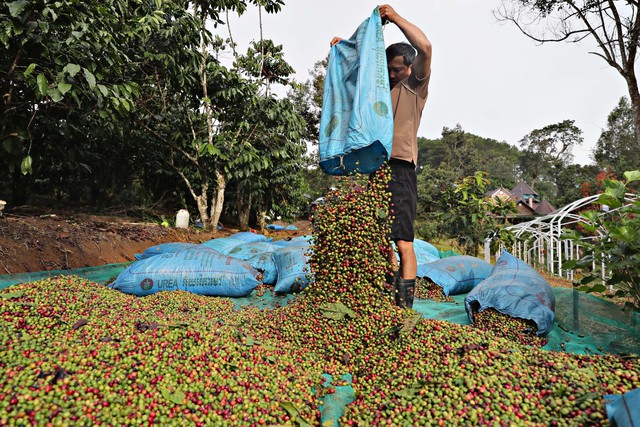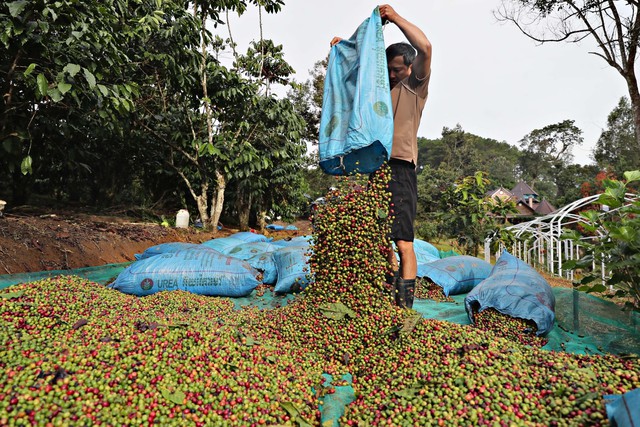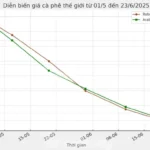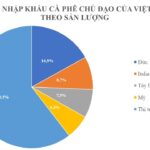Vietnam is one of the world’s leading exporters of coffee, predominantly Robusta. Vietnamese coffee is exported to over 80 markets. In 2024, Vietnam exported approximately 1.46 million tons of coffee, reaching a value of 5.43 billion USD, the highest ever for a coffee crop year.
However, according to statistics released by the Ministry of Agriculture and Environment, the export turnover of this commodity in the first six months of this year recorded an outstanding increase.
Accordingly, in the first half of 2025, coffee exports reached 5.5 billion USD, a significant surge from 2.7 billion USD in the same period last year, and far exceeding the figure of 5.4 billion USD for the entire 2024. This is the first time the coffee industry has achieved this export volume in just the first half of the year.

With this achievement, Vietnam’s coffee industry not only broke historical records but also accomplished its goal for the year ahead of schedule. Notably, this result was achieved during a period of significant fluctuations and sharp declines in coffee prices in the market.
On the London floor, the price of Robusta coffee delivered in July fell by 30.9% to 3,661 USD/ton, while the September contract fell by 31.6% to 3,593 USD/ton. This is the sharpest decline in more than a year.
Domestic coffee prices are also experiencing fluctuations. On June 30, the price of bulk coffee in the Central Highlands decreased to 94,500 VND/kg, the lowest since the beginning of the year. Previously, in March, the price had peaked at 135,400 VND/kg.
The Ministry of Agriculture and Environment attributed the sharp increase in export turnover to large-value orders from key markets such as the US, EU, Japan, South Korea, and China. Vietnam has boosted exports of deeply processed coffee, specialty coffee, and instant coffee – segments with high added value.
The US market remains the biggest supporter of Vietnam’s processed coffee, especially instant coffee and specialty coffee. Meanwhile, global coffee supply is declining due to climate change, high world prices, and strong consumption demand. As a result, Vietnamese coffee can still proactively cope to maintain its market share in the US while continuing to promote the Robusta coffee segment.
The Northeast Asian region, including Japan, China, and South Korea, is emerging as a strong market for Vietnam’s Robusta coffee consumption. Additionally, newly emerging markets such as the Philippines and Thailand are also considered potential destinations for export expansion in the coming time.

However, as the largest coffee production is concentrated in the harvest season from December to April of the following year, the Ministry of Agriculture and Environment assessed that exports in the last months of the year may not be as high as in the first half. The Ministry predicted that coffee export turnover is likely to reach 7.5 billion USD in 2025, up 36.9% compared to 2024. This is also the highest growth rate ever.
Despite the positive results, Mr. Nguyen Nam Hai, Chairman of the Vietnam Coffee and Cocoa Association, pointed out that the Vietnamese coffee industry is also facing challenges.
The recent sharp drop in coffee prices is not due to domestic factors but mainly because Brazil had a bumper crop, and Indonesia had large inventories. Additionally, the appreciation of the US dollar caused international speculators to take profits, further pressuring the global coffee market.
To maintain the growth momentum, the Ministry of Agriculture and Environment recommends that the coffee industry continue to promote the shift to deep processing, expand export markets, and proactively respond to global economic fluctuations.
Is the Coffee Price Crash Unusual?
For coffee exporters, volatile coffee prices pose significant challenges and inherent risks to their business operations.





















